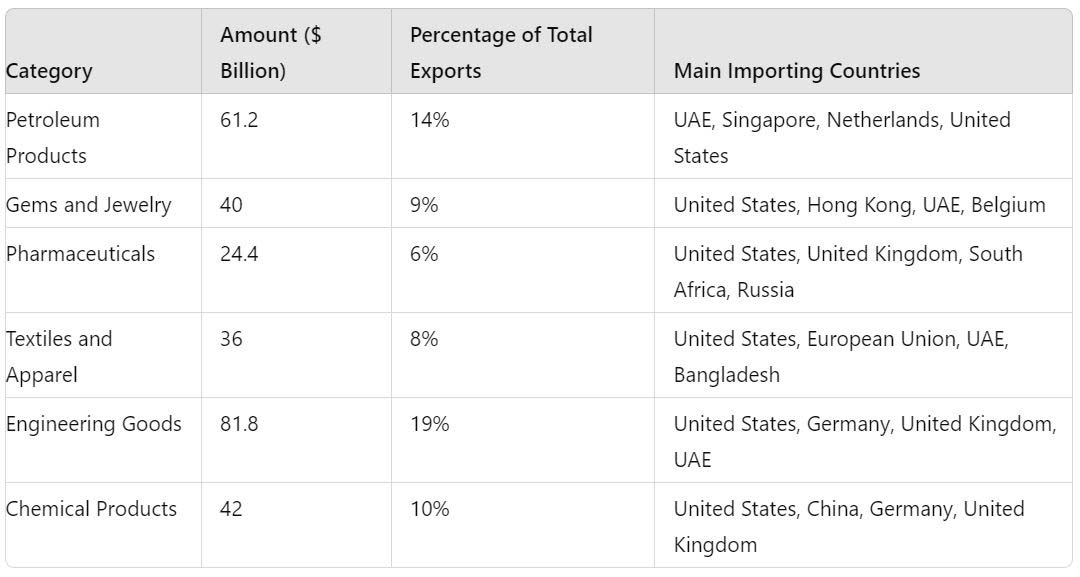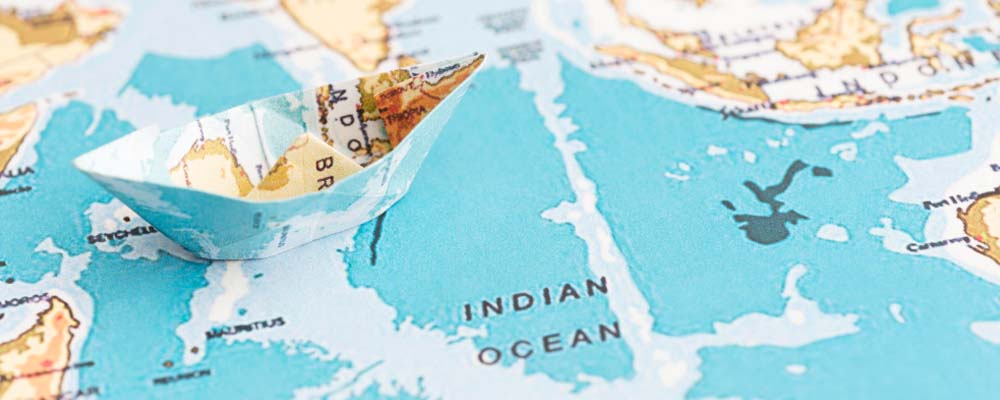 India is a powerhouse in the global market, thanks to its diverse and dynamic trade activities. For freight forwarding companies, logistics providers, importers, exporters, and other industry stakeholders, understanding India’s main exports and imports is crucial. Not only does it offer insights into the country’s economic strategies, but it also helps businesses make informed decisions.
India is a powerhouse in the global market, thanks to its diverse and dynamic trade activities. For freight forwarding companies, logistics providers, importers, exporters, and other industry stakeholders, understanding India’s main exports and imports is crucial. Not only does it offer insights into the country’s economic strategies, but it also helps businesses make informed decisions.
In this blog post, we’ll explore India’s primary exports and imports, discussing their significance and impact on the economy. We’ll also provide practical tips and valuable insights for industry professionals navigating this complex landscape.
Main Exports of India Petroleum Products
Petroleum Products
India’s petroleum product exports are a driving force behind its economy. With exports totaling $61.2 billion, they account for 14% of the country’s total exports. Major importing countries include the UAE, Singapore, the Netherlands, and the United States.
India is one of the largest refining hubs globally, producing and exporting refined products like gasoline, diesel, and other fuel oils. This sector plays a significant role in sustaining the nation’s GDP and meeting global energy demands.
Gems and Jewelry
The gems and jewelry sector is another critical component of India’s export portfolio. Valued at $40 billion, it represents 9% of total exports. The main destinations for these exports are the United States, Hong Kong, the UAE, and Belgium.
India’s expertise in cutting and polishing diamonds makes it a global leader in this market. The sector includes a variety of products, from cut and polished diamonds to gold jewelry and other precious stones, showcasing India’s craftsmanship and quality.
Pharmaceuticals
India’s pharmaceutical industry, often referred to as the “pharmacy of the world,” exports $24.4 billion worth of products, making up 6% of total exports. The United States, United Kingdom, South Africa, and Russia are the main importers.
Known for its large production capacity and competitive pricing, India’s pharmaceutical sector primarily exports generic medicines. This industry is crucial for global healthcare, providing affordable medication to various countries.
 Textiles and Apparel
Textiles and Apparel
Textiles and apparel are one of India’s oldest and most significant economic sectors. With exports totaling $36 billion, they contribute 8% to the country’s total exports. The main importing regions are the United States, the European Union, the UAE, and Bangladesh.
This sector comprises a range of products, including cotton textiles, readymade garments, and man-made fiber products. India’s rich textile heritage and modern manufacturing capabilities make it a key player in the global textile market.
Engineering Goods
Engineering goods are India’s largest export category, with a value of $81.8 billion, accounting for 19% of total exports. Major importers include the United States, Germany, the United Kingdom, and the UAE.
India exports a variety of engineering products, such as heavy machinery, automotive parts, and electrical machinery. The country’s growing industrial base and technological advancements have significantly bolstered this sector.
 Chemical Products
Chemical Products
India’s chemical industry is a major export sector, contributing $42 billion to the economy and making up 10% of total exports. The United States, China, Germany, and the United Kingdom are key importers.
This sector includes organic and inorganic chemicals, dyes, and agrochemicals. India’s expertise in producing value-added chemical products makes them highly sought after in the global market.
Strategy and Analysis of India’s Exports
India’s export strategy emphasizes high-value products like petroleum and gems, crucial for foreign exchange earnings. Pharmaceuticals and engineering goods highlight India’s manufacturing prowess and technological advancements. Understanding these trade dynamics is essential for stakeholders to navigate India’s economic landscape effectively.
Main Imports of India Crude Oil
Crude Oil
Crude oil is India’s most significant import, valued at $111.9 billion and accounting for 27% of total imports. The primary exporting countries are Saudi Arabia, Iraq, the UAE, and the United States.
India relies heavily on crude oil imports to meet its energy needs. Being one of the largest consumers of oil globally, India imports unrefined petroleum for refining into various essential products.
 Gold
Gold
India’s gold imports are substantial, amounting to $33.9 billion and representing 8% of total imports. Switzerland, the UAE, South Africa, and the United States are the main suppliers.
Gold is primarily imported for jewelry and investment purposes. The cultural significance of gold in India drives its high demand, making it a crucial component of the import bill.
Electronics
Electronics imports are crucial for supporting India’s rapidly growing digital economy. Valued at $58 billion, they account for 14% of total imports. China, Vietnam, Hong Kong, and Singapore are the leading exporters.
The demand for electronics, including mobile phones, computers, and other components, is driven by technological infrastructure and consumer needs.
Machinery
Machinery imports are essential for India’s industrial and infrastructure development. With a value of $45 billion, they make up 11% of total imports. The main exporting countries are China, Germany, Japan, and the United States.
India imports a wide range of industrial machinery, capital goods, and electrical machinery to support its modernization efforts.
Chemicals
Chemical imports are vital for various sectors, including agriculture and manufacturing. Valued at $36.6 billion, they account for 9% of total imports. China, the United States, Saudi Arabia, and Germany are the main exporters.
These imports include fertilizers, plastics, and organic chemicals, supporting the production of essential goods and services within the country.
Strategy and Analysis of India’s Imports
India’s import strategy reflects its need to support a growing economy and a large population. The significant import of crude oil highlights dependency on external energy sources. The high demand for electronics and machinery indicates ongoing industrialization and technological advancement. Understanding these dynamics is crucial for stakeholders navigating India’s economic landscape and international trade relations.
 Conclusion
Conclusion
India’s trade landscape is diverse and dynamic, offering numerous opportunities and challenges for industry professionals. By understanding the country’s main exports and imports, stakeholders can make informed decisions and strategize effectively.
From petroleum products to pharmaceuticals, and from crude oil to electronics, each sector plays a crucial role in shaping India’s economy. By staying informed and adapting to market trends, businesses can thrive in this competitive environment.
For those looking to integrate seamlessly into India’s trade ecosystem, staying updated on these trends is essential. Whether you’re a freight forwarder, logistics provider, importer, exporter, or industry professional, these insights will help you navigate the complexities of India’s trade landscape.
If you’re keen to explore more, consider booking a consultation with us. Your success in India’s vibrant trade market starts with staying informed.




 Petroleum Products
Petroleum Products Textiles and Apparel
Textiles and Apparel Chemical Products
Chemical Products Crude Oil
Crude Oil Gold
Gold Conclusion
Conclusion



